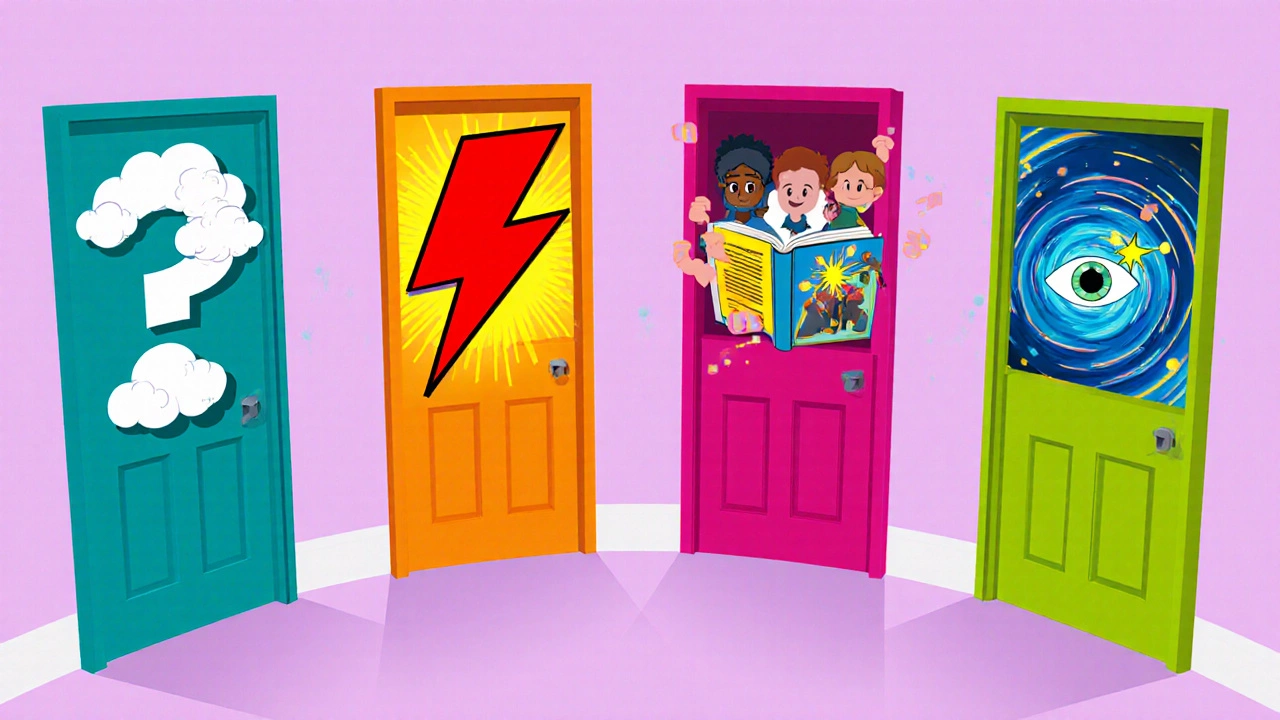Catchy Opening Sentence Generator
Your Catchy Opening:
Pro Tip
Test different opening sentences with your audience using A/B testing tools to see which one performs best.
When you start a piece of writing, the first few words are the make‑or‑break moment. A catchy opening sentence is a brief, attention‑grabbing line that opens a piece of writing and compels the reader to keep going. Think of it as the elevator pitch for your entire article - if the elevator stops at the wrong floor, no one will hear the rest of your story.
Key Takeaways
- A catchy opening sentence pulls the reader in within the first 5‑10 words.
- Use one of the proven hook types: question, bold statement, anecdote, or surprising fact.
- Match the tone of your audience and the overall purpose of the piece.
- Test, edit, and measure engagement metrics like scroll depth and time on page.
- Avoid cliché openings and keep it concise.
What Exactly Is a Catchy Opening Sentence?
In the world of hook, the opening line is the first weapon you fire. It can be a question that sparks curiosity, a bold claim that shocks, or a tiny story that makes the reader picture a scene. The goal is simple: make the reader feel that stopping now means missing out.
Why It Matters for Every blog post and Article
Data from several content platforms in 2024 shows that 70% of readers abandon an article within the first 30 seconds if the opening fails to hook them. Bounce rates drop dramatically when a strong opening is present - average time on page climbs from 1:12 to 2:45 minutes. That extra minute often translates into higher ad revenue, more email sign‑ups, and better SEO signals because search engines notice longer dwell time.
Four Proven Types of Hooks
Most experts agree that effective openings fall into four categories. Below is a quick comparison so you can pick the style that fits your niche.
| Hook Type | When to Use | Example |
|---|---|---|
| Question | When you want immediate curiosity | "What would you do if you could double your blog traffic overnight?" |
| Bold Statement | When your content challenges common belief | "Most SEO myths are just modern folklore." |
| Anecdote | When storytelling enhances credibility | "I once wrote a headline that made a 5‑minute read go viral in 24 hours." |
| Surprising Fact | When data can shock the audience | "Did you know that 60% of readers never scroll past the first paragraph?" |
Step‑by‑Step: Crafting Your Own Catchy Opening Sentence
- Know your audience. Are they beginners, seasoned marketers, or hobbyist writers? Tailor language and references accordingly.
- Pick a hook type. Review the table above and decide which format aligns with your goal.
- Write a draft in 5‑10 words. Keep it short-think tweet length.
- Test for impact. Read it aloud. Does it make you sit up? If not, tweak the verb or the adjective.
- Check tone. A formal report needs a different voice than a lifestyle blog.
- Validate with data. Use A/B testing tools (e.g., Google Optimize) to compare click‑through or scroll depth.

Common Pitfalls and How to Fix Them
Even seasoned writers slip into stale patterns. Spot these red flags early:
- Cliché language: Phrases like "In today’s fast‑paced world" have lost punch. Replace with concrete details.
- Over‑promise, under‑deliver: If your opening claims a "secret" but the article only recaps basics, readers feel cheated.
- Too much jargon: A technical term without context will alienate newcomers. Define it quickly or choose a simpler word.
- Lengthy preamble: Anything beyond 15 words risks losing the reader’s attention before the hook lands.
Checklist: Does Your Opening Sentence Pass the Test?
- Is it under 15 words?
- Does it create curiosity, surprise, or emotion?
- Is the tone aligned with the rest of the piece?
- Does it avoid generic buzzwords?
- Can you rewrite it in three different ways without losing meaning?
Real‑World Examples Across Niches
Below are five openings that have proven effective in their respective article intro sections. Notice the hook type and brevity.
- Travel Blog: "If you could watch the sunrise over three continents in one day, would you?" (Question)
- Finance Guide: "Most people think credit scores are immutable; they’re not." (Bold Statement)
- Health Article: "I once walked into a clinic convinced I’d never run a marathon again-until I tried this 4‑minute drill." (Anecdote)
- Tech Review: "Apple sold 90million iPhones in 2023, but only 12% use the newest iOS features." (Surprising Fact)
- Personal Development: "The habit that changed my life didn’t involve waking up at 5a.m.; it started with a 30‑second decision." (Bold Statement)
Measuring Success: Metrics That Matter
After you publish, keep an eye on these numbers to know if your opening is doing its job:
- Scroll Depth: Percentage of readers who reach the end of the first paragraph.
- Time on Page: Longer dwell suggests the opening held interest.
- Bounce Rate: A drop of 5‑10% often indicates a stronger hook.
- Conversion Rate: For lead‑gen posts, compare sign‑up percentages before and after a headline tweak.
Tools like Google Analytics, Hotjar, or even native platform insights can surface these stats in real time.
Quick Fixes for Weak Openings
If the data shows high bounce, try one of these rapid adjustments:
- Swap the question for a surprising fact.
- Add a short, vivid image description to create a mental picture.
- Insert a direct address - “You’re about to learn…” - to personalize.
- Trim any extraneous adjectives that don’t add punch.
Next Steps for Writers
Take the checklist, write three variations of your opening, and run a small A/B test on your blog platform. Record the metrics for a week, then choose the winner. Remember, the opening isn’t a one‑time thing - revisit it whenever you update the article.

Frequently Asked Questions
How long should a catchy opening sentence be?
Ideally 5‑15 words. Anything longer risks losing the reader’s attention before the hook lands.
Can I use the same opening sentence for multiple posts?
It’s better to customize each opening. Duplicate openings can hurt SEO because search engines favor unique, context‑specific content.
Should I test different hooks on the same article?
Absolutely. A/B testing different opening sentences lets you see which one drives higher scroll depth and lower bounce rates.
Is it okay to start with a quote?
Quotes work if they’re relevant and striking. A weak or unrelated quote can feel like filler rather than a hook.
How do I know which hook type fits my audience?
Survey your readers or look at past top‑performing posts. If your audience loves data, use surprising facts; if they enjoy stories, go with anecdotes.



